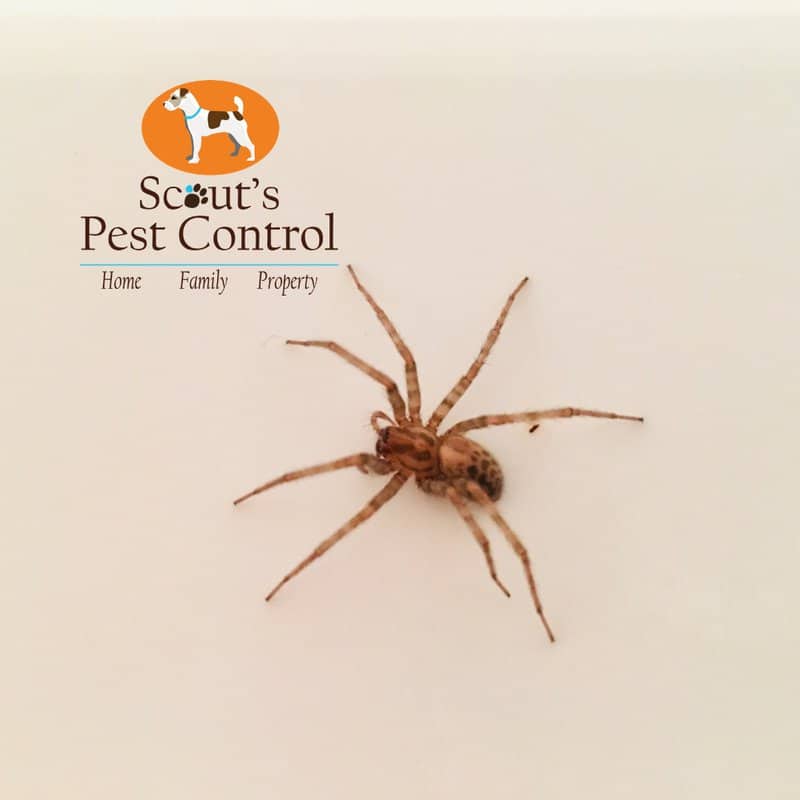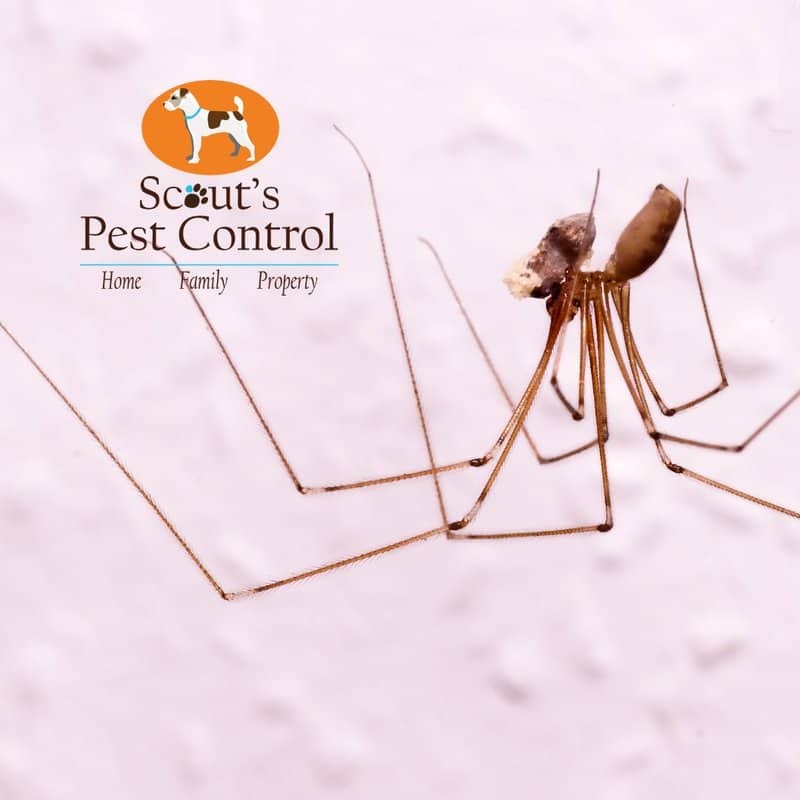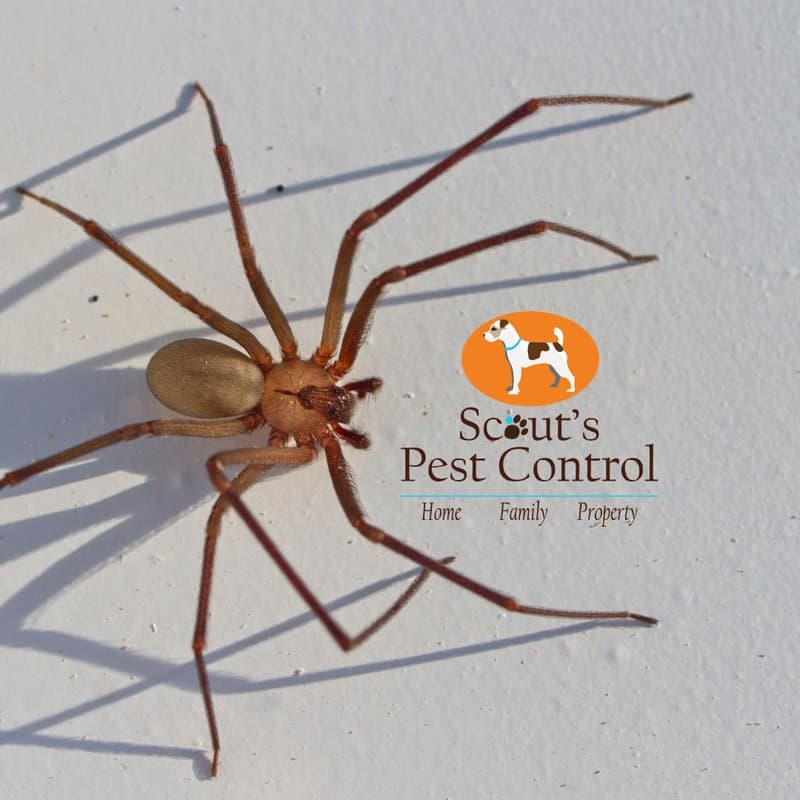The brown recluse spider is dangerous, with a venom stronger than a rattlesnake’s. Its bite can necrotize the affected skin, killing cells and tissues in the area.

Many people fear the brown recluse and yet many reports of sighting this deadly spider are false and hence unwarranted. In Southern US, the brown recluse is not as prevalent as other spiders. So be aware that not every brown spider is a brown recluse spider. In fact, there are at least two other brown spiders — both of them eight-legged just like the brown recluse — in South Carolina which are more frequently encountered than the brown recluse. And neither of those two spiders is harmful at all. We take a look at those two, and then finally at the brown recluse in this article.
1) American House Spider
The American House Spider is a nickel-sized and comb-footed spider, with its hallmark of a rounded abdomen.

This spider loves to build messy webs in basements, crawl spaces and closets. If you find a brown spider entwined in its own cobweb, you are probably looking at the very-commonly-met American House Spider.
Although a nuisance pest, the American House Spider poses little threat to humans — it is actually shy of human interaction, but may bite when threatened. The bite is quite harmless, and you need not worry of any ills if bitten.
From a distance, the American House Spider looks quite similar to the brown recluse. Besides similar color, size and number of legs, there are other factors — the legs are pretty much the same length; the body consists of two sections which are almost equally sized; the front section bears two short fangs. It is only upon closer inspection that the viewer can make out that the spider in view is an American House Spider, not a brown recluse.
Chances that your brown spider is an American House Spider: 60%
2) Daddy Longlegs
This spider stands out for its very thin and very long legs that come off a small, round body at the center. Daddy Longlegs is also referred to as Long-Bodied Cellar Spider and is actually different in its anatomy from a true Daddy Longlegs. A true Daddy Longlegs has just one body section and two eyes, whereas the Long-Bodied Cellar Spider has two body sections and usually eight eyes.

Daddy Longlegs are found in areas with high levels of moisture: basements, crawlspaces, garages, sheds, barns, closets. Daddy Longlegs do not have venom glands and thus pose no harm to humans.
Since Daddy Longlegs has a remarkably unique appearance, it should be easy not to confuse it with the brown recluse. And yet, many brown recluse sightings eventually get resolved upon close inspection as Daddy Longlegs.
Chances that your brown spider is a Daddy Longlegs: 30%
3) Brown Recluse Spider
Finally we touch upon the one spider you do need to be wary of: the Brown Recluse Spider.

The Brown Recluse Spider is a brown spider with distinct violin-shaped markings at the top of its cephalothorax (fused head and thorax). For this feature, the Brown Recluse Spider is also often referred to as Violin Spider, and sometimes also as Fiddle-back Spider. Unlike the eight eyes that most other spiders have, brown recluse spiders have six eyes.
Brown recluse spiders live in warm, dry and dark environments — attics, closets, basements, crawl spaces, barns, wood piles. They have a knack for hitchhiking, often landing amongst bedding and clothing. These spiders are native to the US Midwest and Southeast.
The brown recluse usually does not bite humans unless it feels threatened. But if it does, the human affected must seek immediate professional medical counsel. Initial symptoms of a brown recluse bite include physical trauma, pain and itchiness at the site of the bite. After a few hours, the affected skin may start developing lesions and necrosis with extensive soft tissue destruction. The damaged tissue becomes gangrenous and subsequently sloughs away. Moreover, in serious reactions, a “volcano lesion” may occur, leaving an open wound at times as large as a human hand — up to 10 inches (ca. 25 cm) in size. In rare cases, hemolysis — the bursting of red blood cells — may result. In extremely rare cases, the end result may be tragic: there is one confirmed case in the US of death resulting from a brown recluse bite.
Chances that your brown spider is a Brown Recluse Spider: 10%
In Summary
If you meet a brown spider in your domicile — or, much worse, get bitten by one — your first action must be to ascertain what type of spider it actually is. Only in case where you are fairly certain that the offender is a brown recluse should you feel the need for alarm. If you remain uncertain despite whatever investigation is possible, try to carry the offending spider — or at least a photo of the spider — to a local clinic or hospital where they might analyze the type of the spider and ascertain the need for any remedy.
Of course, the best way as always to reduce the risk of any spiders and any spider bites in your home is to begin a regular home pest control program.





